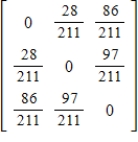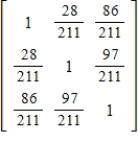Multiple Choice
A man owns an Audi, a Ford, and a VW. He drives every day and never drives the same car two days in a row. These are the probabilities that he drives each of the other cars the next day:
Pr(Ford after Audi) =  Pr(VW after Audi) =
Pr(VW after Audi) =  Pr(Audi after Ford) =
Pr(Audi after Ford) =  Pr(VW after Ford) =
Pr(VW after Ford) =  Pr(Audi after VW) =
Pr(Audi after VW) =  Pr(Ford after VW) =
Pr(Ford after VW) = 
What is the steady-state vector for this problem?
A) 
B) 
C) 
D) 
E) 
Correct Answer:

Verified
Correct Answer:
Verified
Q118: An unprepared student must take a 7-question,
Q119: Can the matrix <img src="https://d2lvgg3v3hfg70.cloudfront.net/TB1243/.jpg" alt="Can the
Q120: Suppose a die is biased (unfair) so
Q121: The following table gives the percent of
Q122: The probability that a wife W watches
Q124: A bag contains 4 red balls and
Q125: The probability that daughters of a mother
Q126: The 2003 Toyota Matrix was first made
Q127: Suppose a country has 1,000,000 registered voters,
Q128: For species that reproduce sexually, characteristics are